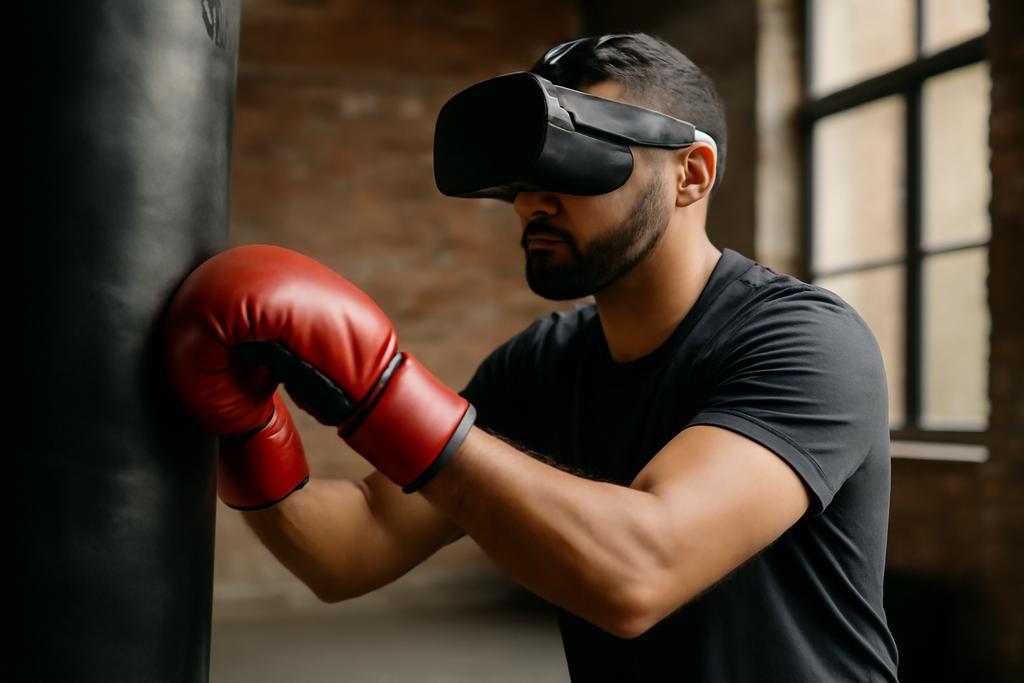Reimagining Fitness Beyond Sight
For many, the idea of boxing conjures images of quick jabs, swift footwork, and the sharp focus of an athlete reading their opponent’s every move. But what if you couldn’t see the opponent at all? How do you train your body and mind when the world of visual cues is erased? Researchers at the University of Illinois Urbana-Champaign have taken on this challenge headfirst, creating PunchPulse, a virtual reality (VR) boxing game designed specifically with, for, and by blind and low-vision (BLV) players. This isn’t just a game; it’s a bold experiment in how technology can reshape physical activity for those often left out of traditional fitness spaces.
Why This Matters
Physical activity is a cornerstone of health, yet BLV individuals face significant barriers to engaging in exercise. Traditional workouts rely heavily on visual feedback—think of following a trainer’s movements or reading a timer on a screen. The Royal National Institute of Blind People reports that over half of BLV adults identify as physically inactive, a stark contrast to the general population. This inactivity isn’t just about missing out on fitness; it’s linked to higher risks of obesity, heart disease, and mental health struggles.
Enter PunchPulse, a VR exergame that flips the script. Instead of relying on sight, it uses a symphony of sound and touch to guide players through a physically demanding boxing match. The goal? To help BLV users reach and sustain moderate-to-vigorous physical activity (MVPA)—the kind of exercise intensity that truly benefits health.
Designing with Empathy and Expertise
What sets PunchPulse apart is its deeply collaborative design process. Over seven months, the team worked closely with BLV co-designers who tested prototypes, shared insights, and shaped every aspect of the game. Early versions featured a predictable rhythm-based punching mechanic, but feedback quickly revealed that this felt repetitive and lacked the full-body challenge players craved.
So the developers introduced a dynamic opponent that moves unpredictably—sidestepping, ducking, advancing—forcing players to stay alert and physically engaged. The game’s punch detection requires full arm extension, encouraging real, whole-body movement rather than button mashing. To help players orient themselves, PunchPulse uses spatial audio cues framed as clock directions (“Enemy at 3 o’clock”) combined with haptic feedback through the controllers. This multimodal approach creates a rich sensory map that players can navigate without sight.
From Pilot to Proof: Players Step into the Ring
The team conducted a pilot test with two blind participants, followed by a structured user study involving six more. Participants wore VR headsets and Apple Watches to track heart rate and energy expenditure, providing objective data on physical exertion. The results were striking: all participants reached MVPA levels during gameplay, with some sustaining these zones for extended periods. This means PunchPulse isn’t just fun—it’s a legitimate workout.
Players described feeling immersed and physically engaged, often losing track of time as they ducked, punched, and moved around their real-world space. One participant noted, “Sometimes I would swing and it wouldn’t hit, but I could feel the distance,” highlighting how the game fosters an embodied sense of space and action without vision.
Challenges in the Virtual Ring
Of course, the journey wasn’t without hurdles. Some players initially struggled to interpret the clock-based audio cues, occasionally punching in the wrong direction or feeling disoriented. Fatigue and cognitive load increased as the rounds progressed, reflecting the real demands of boxing. Yet, rather than deterring players, these challenges often sparked creativity and strategy, with participants developing personal methods to stay oriented and engaged.
The study also revealed the importance of structured pacing. PunchPulse uses three fixed 10-minute rounds with escalating difficulty, allowing players to build endurance and adapt to increasing intensity. Breaks between rounds serve as cognitive reset points, helping maintain motivation and prevent burnout.
Beyond the Game: Implications and Future Directions
PunchPulse demonstrates that VR can be a powerful tool for inclusive fitness, breaking down barriers that have long excluded BLV individuals from vigorous exercise. By integrating auditory and haptic feedback with thoughtful game mechanics, the system supports autonomy, immersion, and meaningful physical exertion.
However, the researchers acknowledge limitations. The current hardware requires sighted assistance for initial setup, and the study’s small sample size limits broad generalizations. Future work aims to develop voice-guided onboarding, tactile calibration tools, and adaptive orientation cues to enhance independence. Long-term studies will explore sustained use and health outcomes, while home deployment trials will test real-world feasibility.
When Technology Meets Human Resilience
PunchPulse is more than a VR game—it’s a testament to how technology, when designed with empathy and collaboration, can empower people to overcome physical and sensory barriers. It invites us to rethink what fitness looks like and who gets to participate. In the virtual ring, punches aren’t just about strength; they’re about connection, adaptation, and the joy of movement beyond sight.
For those interested, PunchPulse is available as an open-source project on GitHub, inviting developers and researchers worldwide to build on this foundation and push the boundaries of accessible exergaming.
Research led by Sanchita S. Kamath and colleagues at the University of Illinois Urbana-Champaign.










